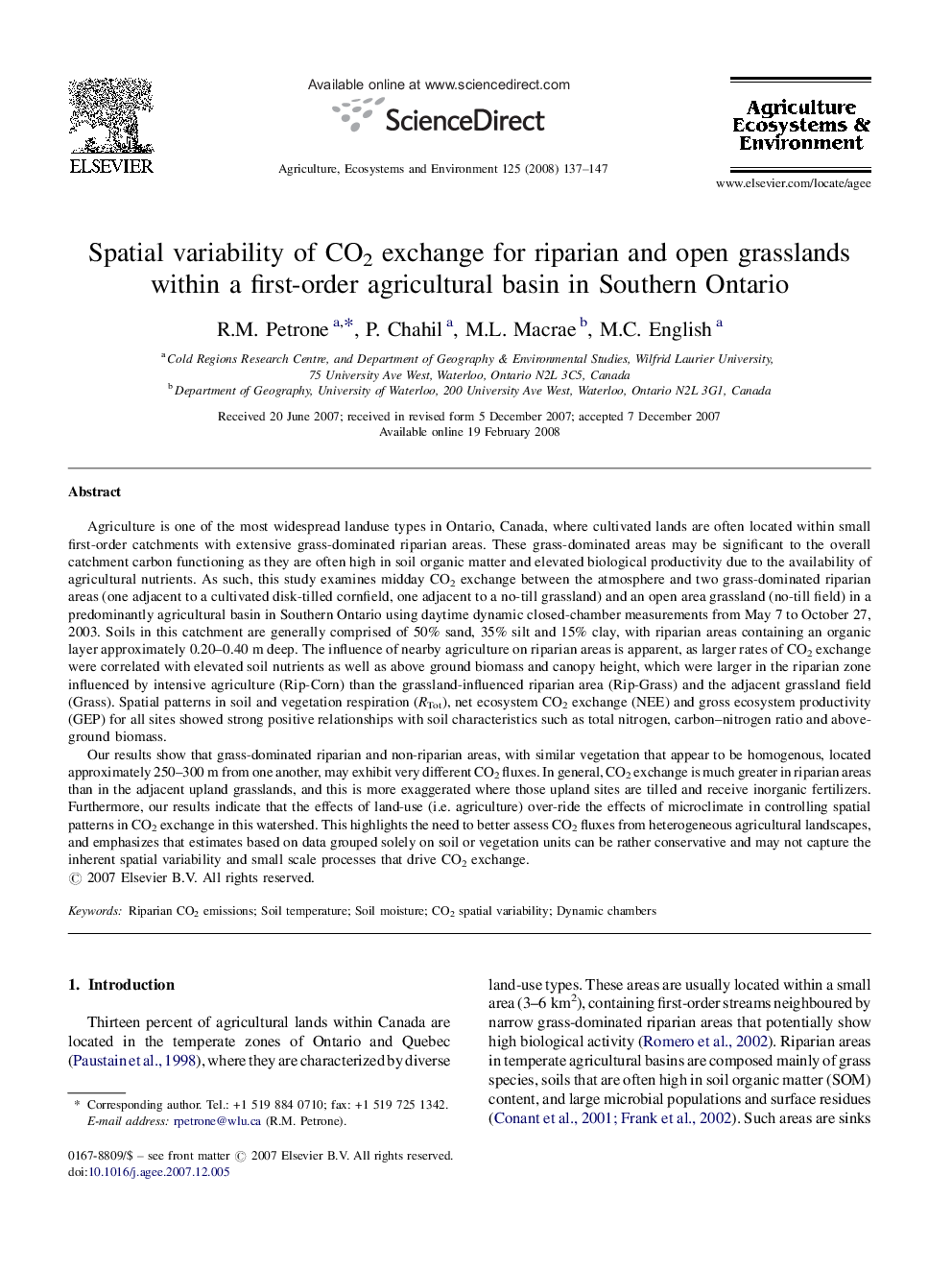| کد مقاله | کد نشریه | سال انتشار | مقاله انگلیسی | نسخه تمام متن |
|---|---|---|---|---|
| 2415426 | 1552136 | 2008 | 11 صفحه PDF | دانلود رایگان |

Agriculture is one of the most widespread landuse types in Ontario, Canada, where cultivated lands are often located within small first-order catchments with extensive grass-dominated riparian areas. These grass-dominated areas may be significant to the overall catchment carbon functioning as they are often high in soil organic matter and elevated biological productivity due to the availability of agricultural nutrients. As such, this study examines midday CO2 exchange between the atmosphere and two grass-dominated riparian areas (one adjacent to a cultivated disk-tilled cornfield, one adjacent to a no-till grassland) and an open area grassland (no-till field) in a predominantly agricultural basin in Southern Ontario using daytime dynamic closed-chamber measurements from May 7 to October 27, 2003. Soils in this catchment are generally comprised of 50% sand, 35% silt and 15% clay, with riparian areas containing an organic layer approximately 0.20–0.40 m deep. The influence of nearby agriculture on riparian areas is apparent, as larger rates of CO2 exchange were correlated with elevated soil nutrients as well as above ground biomass and canopy height, which were larger in the riparian zone influenced by intensive agriculture (Rip-Corn) than the grassland-influenced riparian area (Rip-Grass) and the adjacent grassland field (Grass). Spatial patterns in soil and vegetation respiration (RTot), net ecosystem CO2 exchange (NEE) and gross ecosystem productivity (GEP) for all sites showed strong positive relationships with soil characteristics such as total nitrogen, carbon–nitrogen ratio and above-ground biomass.Our results show that grass-dominated riparian and non-riparian areas, with similar vegetation that appear to be homogenous, located approximately 250–300 m from one another, may exhibit very different CO2 fluxes. In general, CO2 exchange is much greater in riparian areas than in the adjacent upland grasslands, and this is more exaggerated where those upland sites are tilled and receive inorganic fertilizers. Furthermore, our results indicate that the effects of land-use (i.e. agriculture) over-ride the effects of microclimate in controlling spatial patterns in CO2 exchange in this watershed. This highlights the need to better assess CO2 fluxes from heterogeneous agricultural landscapes, and emphasizes that estimates based on data grouped solely on soil or vegetation units can be rather conservative and may not capture the inherent spatial variability and small scale processes that drive CO2 exchange.
Journal: Agriculture, Ecosystems & Environment - Volume 125, Issues 1–4, May 2008, Pages 137–147